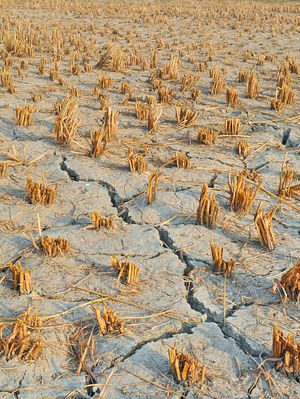In March, China opened the floodgates to its southern Jinghong hydropower station for two weeks, releasing massive amounts of freshwater into the Mekong basin, which feeds continental Southeast Asia. China’s stated aim was to bolster a severely diminished water flow brought on by the combination of dams and El Nino.
The El Nino Southern Oscillation is a natural phenomenon that sees the rising of sea temperatures in the equatorial Pacific Ocean. The change in water temperature affects the natural water cycle, which causes floods in southern China and has brought the most severe droughts in Southeast Asia in 60 years.
China’s domestic dam building initiatives have only exacerbated the effects on drought-hit Southeast Asia. Almost all of Southeast Asia’s freshwater supply has their source in China’s Tibetan Plateau and Xinjiang region. In 1949, China had an estimated 22 dams; today, there are an estimated 90,000 dams. The country now has a choke hold on the flow of the Mekong River, the region’s major waterway.
The Mekong River is the lifeblood of Southeast Asia. It features widely in many cultural aspects of life. It also feeds these nations, providing a rich harvest of rice each year. Le Anh Tuan, deputy director of the Research Institute for Climate Change at the University of Can Tho, Vietnam, said as much as 50 percent of the 2.2 million hectares (5.4 million acres) of arable land in the delta had been hit by salinization thanks to the drought, according to AFP. Vietnam, which sits at the bottom end of the Mekong, announced in March that it had put in a formal request with China to increase flows into the river to alleviate severe salinity levels in it rice plantations.
Analysts have warned that there isn’t enough cross-border management of the Mekong to prevent conflicts in the future. “The current crisis points to the critical need for a regional solution and approach to this shared river, one that is currently missing,” Pianporn Deetes from the U.S.-based watchdog International Rivers told the Wall Street Journal in May.
There are power games at play. The Mekong River Commission was established in 1995. Comprising the governments of Cambodia, Laos, Thailand, and Vietnam, the MRC adopted the mission to “ensure that the Mekong water is developed in the most efficient manner that mutually benefits all Member Countries and minimizes harmful effects on people and the environment in the Lower Mekong Basin.” Its interests lay with the lower basin countries and for this, it was shunned by China.
Instead, Beijing encourage the formation of a new mechanism. In March 2016, China’s Xinhua reported the inaugural meeting of leaders for the Lancang-Mekong Cooperation mechanism (LMC) in Sanya, China, “to provide political guidance and a roadmap for sub-regional cooperation between China and the five Southeast Asian nations of Cambodia, Laos, Myanmar, Thailand, and Vietnam.” For China’s part, it announced that it would offer concessional loans to countries along the Mekong to build water infrastructure, and also called for the use of the Chinese RMB in promoting sustainable development in the region.
The formation of the LMC is perhaps a new approach to garner support for China’s traditional unilateralist methods. However, the drought and El Nino has only exacerbated the agricultural concerns of China’s control over the water resources of Asia.

































